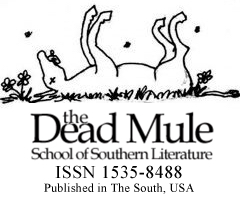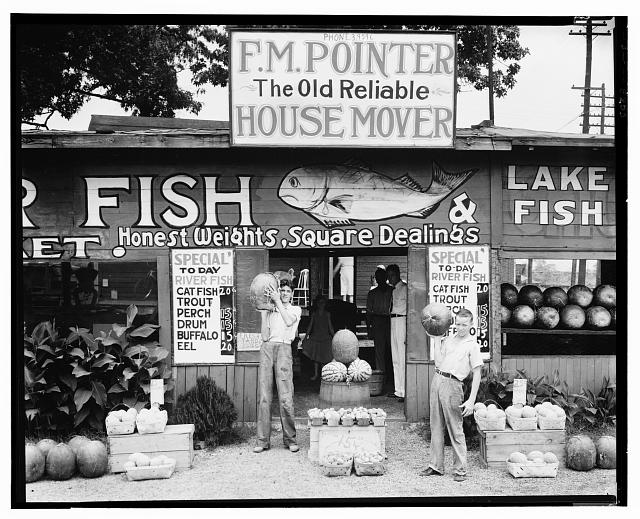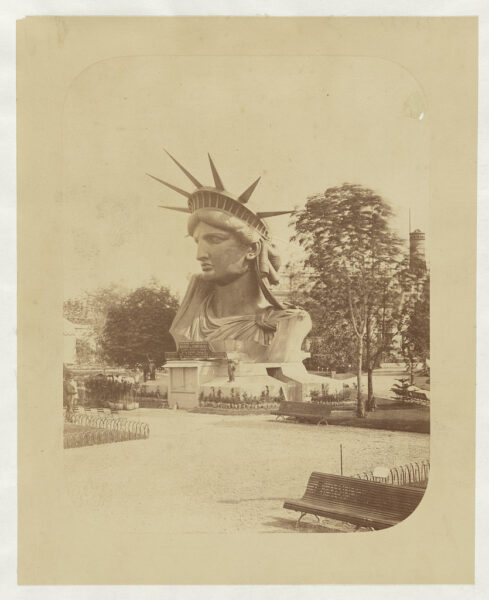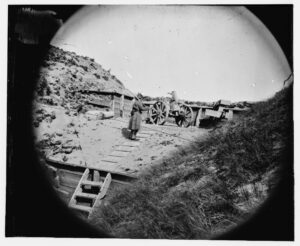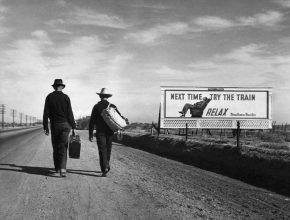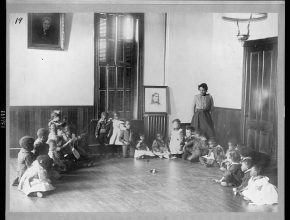
Smells of burning hardwood fill the streets at Old Salem in Winston-Salem as three shy but bold pheasants wiggle haltingly across the road down from the Single Brothers House one July Friday morning, completely unaware humans think there is a ghost living in a cellar there.
Jennifer Bean Bower, associate curator of Photographic Collections at Old Salem, is quite familiar with this specter.
“The Little Red Man ghost story is very popular, and we now actually have a ‘ghost’ tour in October in which visitors can tour the Single Brothers’ House, the place of the accident and sightings at night.
“It is really a lot of fun. To make a long story short, when the Single Brothers House cellar was being excavated the top part of the ground caved in on several of the workers. One man was completely covered by the dirt and later died. His name was Andreas Kremser. He was described as being a short, little man, and legend has it that he was wearing a red jacket at the time of his death.”
That is not the end of the story.
“Shortly after his death ghostly happenings began to occur in the Single Brothers’ House, and sightings of a little red man moving along the hallway were reported,” she said.
Near Old Salem downtown yellowing newspapers are stacked as researchers scour The North Carolina Room at the Winston-Salem Forsyth County Library. Reba Jones smiles behind th desk. It’s very quiet.
She was a tour guide at Old Salem, a native of Winston-Salem. A past president of the Forsyth County Genealogical Society, formed in 1982, she is adept at sharing the history of the area and enjoys doing so.
“I had to oversee everything that was going on in the society. Before you become president, you have to be president-elect, and you get up all the programs for a whole year for every year. As the president, you kind of oversee everything that is going on.” From 1981 to 1989 she was a tour guide at Old Salem.
“When I would have a tour with the school children, they would ask me about the Little Red Man in the Single Brothers House. I would ask them if they believed in ghosts, and if they said yes, I would say ‘Yes, that’s story’s true.’ If they said no, then I said ‘No, it’s not true.’ You have to believe in ghosts.”
Do you believe in ghosts? Have you ever thought you noticed something in the middle of the night that looked out of the ordinary? Maybe there was a silhouette at your window in the darkness outside your room on a dark and stormy night. Some people don’t mind walking in a graveyard at midnight or thereafter. Some people are superstitious. If you are frightened by unexplained events, then maybe you should cease reading from this point on because some of what follows has never been reported until this thorough investigation.
“It’s a fascinating story, and it’s one we like to tell because it is a story of something that did happen there, that they could see the Little Red Man after he had passed away there. They could see the Little Red Man. If you’ve read the story, it says that they thought they saw a little red man down there. That’s the reason, that man’s ghost who got killed down there.”
Does she believe in ghosts?
“Yes and no,” she said. “Yes and no.” Stories like this can be positive for tourism, she admitted.
“I think it does. When they come to Old Salem, if they’ve heard it before, they want to hear about it,” she said, admitting that the history of Old Salem is interesting. “It’s very, very interesting. You can never learn everything from Old Salem.” George Washington visited Old Salem.
“Ghosts of Old Salem and other tales” compiled by Richard W. Starbuck is a good reference. The Moravian Archives of Winston-Salem, N.C. and the Forsyth County Library is also a good start, an archive produced by Adelaide L. Fries, who spent 40 years as an archivist for the Moravian Church and chief historian.
Everywhere one goes, you hear a story about Kremser. One Davidson County man said he was playing Kremser for a Halloween event in the cellar at Old Salem, donning a red hat, and between tours he was alone and heard the tapping.
In “Ghosts of Old Salem & Other Tales” by Richard Starbuck from the Moravian Archives at the Forsyth County Library, it is reported that in the Advent season a Candle Tea is held annually in the house, and some folks have been scared because of unexplained noises.
Kremser was buried in God’s Acre at Old Salem, born March 7, 1753 in Gnadenhutten, Pa., brought up in the home until age three. He lived in Bethlehem and in Nazareth. In October 1766 he moved to North Carolina where he was a shoemaker in Bethabara.
You will learn this and much more in the mass of very interesting papers “Records of the Moravians in North Carolina” compiled and edited by Adelaide L. Fries, chief historian and archivist for 40 years for the Moravian Church of America South Province. There is Volume 5, 1784-1792 which is interesting, part of the records of the N.C. Historical Commission. Starbuck was her assistant archivist and assistant.
The record books by Fries are under lock and key for fear of theft, and they cannot leave The North Carolina Room.
One footnote read, “The tragic death of Andreas Kremser gave rise to the tradition of the Little Red Man of the Brothers House, though in fact it offers no foundation for a ghost story.” In Feb. 6, 1772 he moved to Salem. Just before going to the excavation March 25, 1786 he went to the Festal services of his choir and congregation, and he was “quiet all day.” The next day was the day of the excavation. About half past 11 he was warned by a brother who saw him kneeling while working, according to the history books.
According to Fries’ account, March 25: “During the night the Single Brethren had an unusual and sorrowful experience. Some days ago they began digging the cellar for the addition to their house, and several Brethren were working there in the evenings without charge, and they were doing it this evening after service.
“The Brethren were using a method which expedited the digging and which had worked well so far, that is they had undermined a part of the bank and then break it off from above the ridges. Several Brethren had noticed that on the side where they were now working, the soil was sandy and loose, and they doubted the advisability of using the above-mentioned method, indeed warned earnestly against it: “Few of the Brethren who were working there could see the danger, but most of them took every care, especially when the warning was repeated. When a rather long section had been undermined, the brother who had been stationed above on guard noticed that it was breaking of its own weight and quickly gave the alarm.” This was around midnight.
Kremser was a small man, and he was wearing a red cap when the bank caved in on him.
“And most of the Brethren below were able to avoid the falling earth. To their horror, however, they saw that two Brethren had been covered, Andreas Kremser, completely, and Joseph Dixon, to his armpits. All the Brethren hurried to the scene, including those who had already gone to bed. And in a few minutes they had dug out both of the Brethren. Brother Dixon had not been injured, and after being bled, he recovered entirely in a few hours.” Kremser had been buried alive. He allegedly spoke, “complaining of pain.” His left leg was broken, according to the records. A “Doctor Lewis” was there and opened a vein in his arm, “but little blood flowed, and there were soon signs of his approaching departure.” There were many tears.
“Brother Kremser, however, of whose recovery there was hope at first, became weaker and weaker. At about two o’clock in the morning he passed away very quietly, having received the blessing of the congregation and of his choir, given with deep emotion and yet in faith. A thousand thanks were given to our dear Lord for the escape of so many Brethren for who the danger was almost as great.”
Sunday, March 26: “The litany, the homecoming of Brother Andreas Kremser was mentioned in the usual manner.”
March 27: “At one o’clock there was the funeral of our beloved brother Andreas Kremser. Brother Koehler pointed out that our Savior allows nothing to happen to His children except what is best for them and what will promote the object of our faith, that is the salvation of our souls. This must be our point of view in our faith because in our ignorance of His wise designs we do not understand something unusual and affecting the fate and unusual departure of our Brother Kremser. It makes us very sad, but without doubt it was best for him for his heart was so that he was ready to enter into eternal salvation.”
The index of the books note other facts about his life – Kremser’s bills were paid, and the remainder was to be sent to his mother in Bethlehem, Pa. He swept the most important chimneys, the records showed, because one family had the measles. On one March 4 he left the shoe shop and worked in the Single Brother’s kitchen, one page noted. Nov. 16 – “To bring the chimney sweeping into better order Brother Kremser shall be told to divide the list, sweeping part each month and sweeping certain chimneys every month.”
One brother said that Kremser had not been able to climb his chimney, however, that other larger men had been able to do so. Kremser reportedly said that the chimneys ought to be made larger.
Once Kremser took a stack of diaries and letters of May, June and July to Bethabara, and they were entrusted to a man returning to Pennsylvania, the records showed. Although Kremser’s spirit had passed on from this world, his antics had stayed behind.
“Afterward an unusual sound was heard at night, like a tap, tap, tapping of a shoemaker’s hammer. And they would say, ‘There’s Kremser.’”
People would hear light steps in the hallway, according to the history books. Sometimes people would catch a glimpse of a little fellow in a red cap going past a door.
“Little Betsy” went sometimes to visit her aging grandmother in this building when times brought change and females to the building. The girl had just learned to talk since a serious illness had left her deaf. She knew nothing of ghosts.
One day she came to her grandmother with excitement, ‘Betsy saw little man out there,’ according to the records, adding the man beckoned her with his finger as a child signals another to play.
Years passed, and a substantial citizen was shown the cellar, and the Little Red Man appeared as they tried to catch him with no success while the phantom grinned at them from the doorway. The citizen was not addicted to alcohol, the documents added.
Finally visiting minister held an exorcism with the command, “Little Red Man, go to rest,” and he has not been seen since.
There are no such things as ghosts. There are no such things as ghosts. Fear of death and the unknown strikes fear into mortal beings, so therefore we are frightened of the unexplained. But why do skeletons and tombstones gives us the creeps? The prayer said at Kremser’s funeral enlightens us to our mortal journey’s end. Remember. There are no such things as ghosts.
